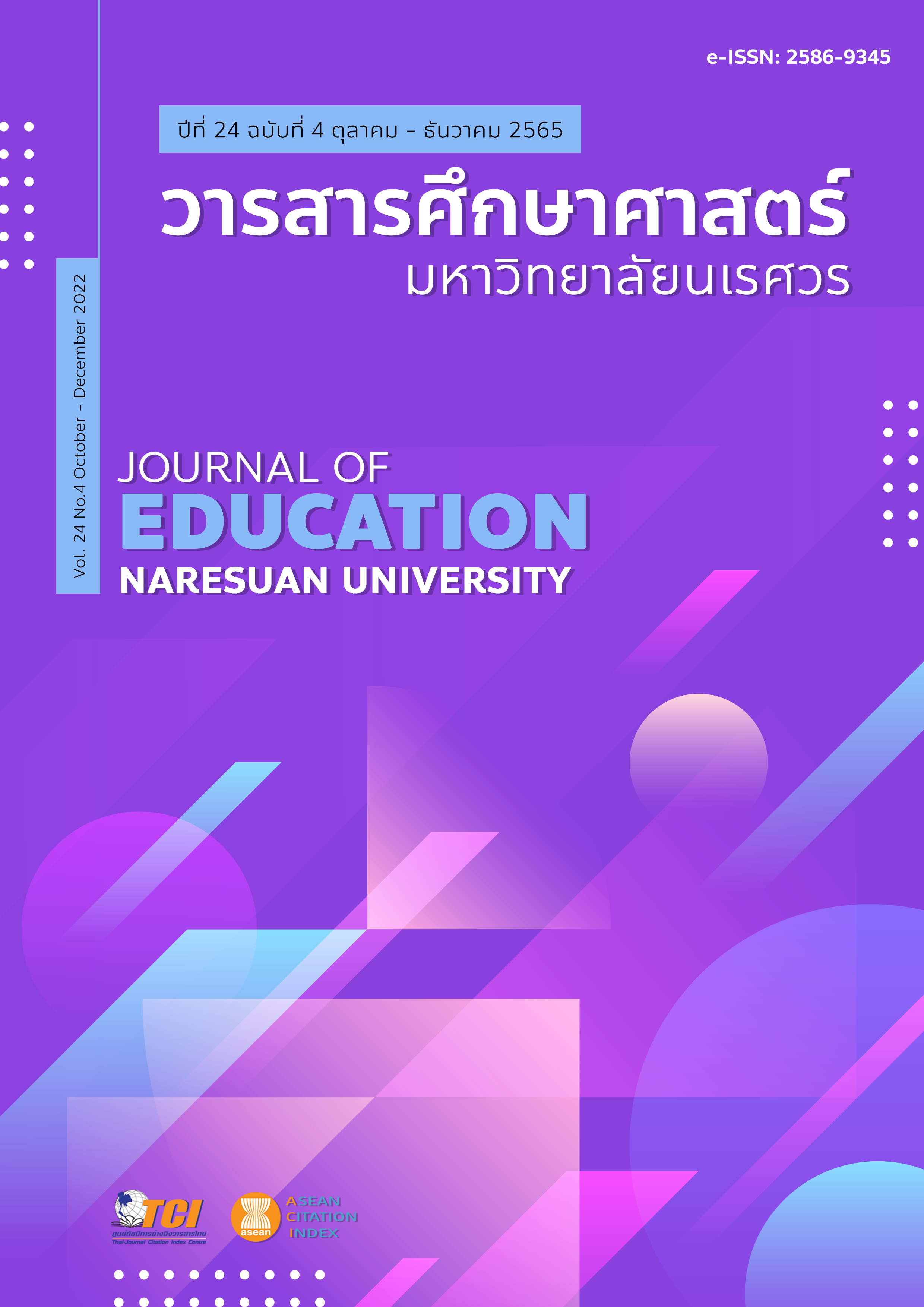EFFECTS OF LEARNING MANAGEMENT USING K-W-L PLUS TECHNIQUE ON ENGLISH READINNG AND WRITING SKILLS OF GRADE 12 STUDENTS: MULTIVARIATE ANALYSIS OF VARIANCE ผลการจัดการเรียนรู้ด้วยเทคนิค K-W-L Plus ที่มีต่อทักษะการอ่านและการเขียนภาษาอังกฤษของนักเรียนระดับมัธยมศึกษาปีที่ 6: การวิเคราะห์ความแปรปรวนพหุคูณ
Main Article Content
Abstract
The purpose of this research were: 1) to develop the K-W-L Plus technique learning plan for reading and writing English language skills for grade 12 students, 2) to study the effectiveness of the K-W-L Plus technique learning plan for English reading and writing skills of grade 12 students, and 3) to compare the reading and writing English language skills of grade 12 students between K-W-L Plus technique learning groups and normal learning groups. Using cluster random sampling, 115 12th grade students at Protpittayapayat School were selected to participate in effectiveness of K-W-L Plus technique group, experimental group and control group. Research tools were as follows: 1) the K-W-L Plus technique learning plan, 2) the normal learning plan, and 3) the content validity evaluation form of K-W-L Plus technique learning plan was validity (IOC) between .60 - 1.00. The English reading skills test was validity (IOC) between .60 - 1.00, difficulty (p) at .39 - .78, discrimination (r) at .22 - .61, reliability at .85. The English writing skill test was validity (IOC) at 1.00, difficulty (p) at .39 - .78, discrimination (r) at .22 - .61, Inter-Rater Reliability (Pearson’s correlation) r = .80. Data were analyzed by mean (), standard deviation (S), MANOVA and efficiency analysis (E1/E2). The results were as follows: 1. The K-W-L Plus technique learning plan was appropriate at a high level (
= 4.23, S = .51) and the normal learning plane was appropriate at the highest level (
= 4.06, S = .37). 2) The efficiency of K-W-L Plus technique learning plan for English skills of grade 12 students was an efficiency score at 80.93/82.42. And 3) the grade 12 students who learned by the K-W-L Plus technique learning plan had English skills at a higher than normal learning level at .05.
Article Details

This work is licensed under a Creative Commons Attribution-NonCommercial-NoDerivatives 4.0 International License.
The owner of the article does not copy or violate any of its copyright. If any copyright infringement occurs or prosecution, in any case, the Editorial Board is not involved in all the rights to the owner of the article to be performed.
References
Amelia, R. (2018). The effect of using KWL plus (Know, Want, Learn, plus mapping and summarizing strategy on students’ reading comprehension. Indonesian Journal of Integrated English Language Teaching (IJIELT), 4(1), 123-132.
Brahmawong, C. (2014). Testing of media efficiency or teaching package. Silpakorn Educational Research Journal, 5(1), 8-10. [in Thai]
Carr, E., & Ogle, D. (1987). K-W-L Plus: A strategy for comprehension and summarization. Journal of Reading, 30, 636-631.
Champadang, S. (2018). The development of analytical thinking by applying KWL- Plus Technique and 5W1H Technique in social studies subject (S21103) for grade 7 students. Journal of Graduate Saket Review, 4(2), 100 – 108. [in Thai]
Changniam, N. (2018). The effects of reading english instruction by KWL- plus technique on reading comprehension ability of lower. Journal of Graduate Studies in Northern Rajabhat Universities, 7(12), 149-160. [in Thai]
Chatson, J. (2018). The development of comprehensive reading ability of Prathomsuksa 5 students using KWL technique integrated with exercises. Journal of MCU Social Science Review, 6(1), 141-151. [in Thai]
Kasemjit, N. (2018). Developing prathomsuksa 6 students’ reading comprehension skills with the use of supplementary reading books on Thai children’s way of life through cooperative learning approach and K-W-L Plus technique. Rommayasan: Journal of Faculty of Humanities and Social, 16(1), 451-469. [in Thai]
Leekitchwatana, P. (2016). Research methods in education (11th ed.). Bangkok: Min Service Supply. [in Thai]
Ministry of Education. (2008). The core curriculum of basic education A.D. 2008. Bangkok: Agricultural Printing Assembly of Thailand. [in Thai]
Ministry of Education. (2008). Indicators and core content of foreign language learning according to the core curriculum of basic education, 2008. Bangkok: Agricultural Printing Assembly of Thailand. [in Thai]
National Science and Technology Development Agency. (2016). Thailand land development policy 4.0. division of research administration and educational quality assurance. Bangkok: Institute for Knowledge Management for Society. [in Thai]
Panich, V. (2012). A way to create learning for disciples in the 21st century. Bangkok: Tathata Publication. [in Thai]
Piphopwongphaisarn, A. (2017). The development of learning activity by using KWL- Plus with authentic materials promoting French reading comprehension for grade 11 students. Journal of Education Naresuan University, 19(2), 273 – 288. [in Thai]
Protpittayapayat School. (2018). Self assessment report (SAR) 2018. Bangkok: Protpittayapayat School. [in Thai]
Siripuban, R. (2008). Guidelines for writing a quality learning plan. Academic Journal, 11(2), 19-23. [in Thai]
Suntadkarn, N. (2019). The development of English reading comprehension skill through KWL – Plus: The case study of the third-year English majors of Ubon Ratchathani Rajabhat University. Humanities and Social Sciences Journal, 10(1), 94-103. [in Thai]
Suttiwet, M. (2018). The development of the reading comprehension achievement using learning management with KWL Plus technique for mathayomsuksa 3 students (Master thesis). Bangkok: Silpakorn University. [in Thai]
Tabachnick, B. G., & Fidell, L. S. (2001). Using multivariate statistics (4th ed.). Boston, MA: Allyn and Bacon.
U-donphaew, M. (2018). A comparison of reading comprehension and English writing for mathayomsuksa 3 level between learning activity based on CIRC and K-W-L Plus approaches. Prae-wa Kalasin Journal of Kalasin University, 5(3), 478 –493. [in Thai]
World Economic Forum. (2015). The global competitiveness report 2015. Geneva: World Economic Forum.


